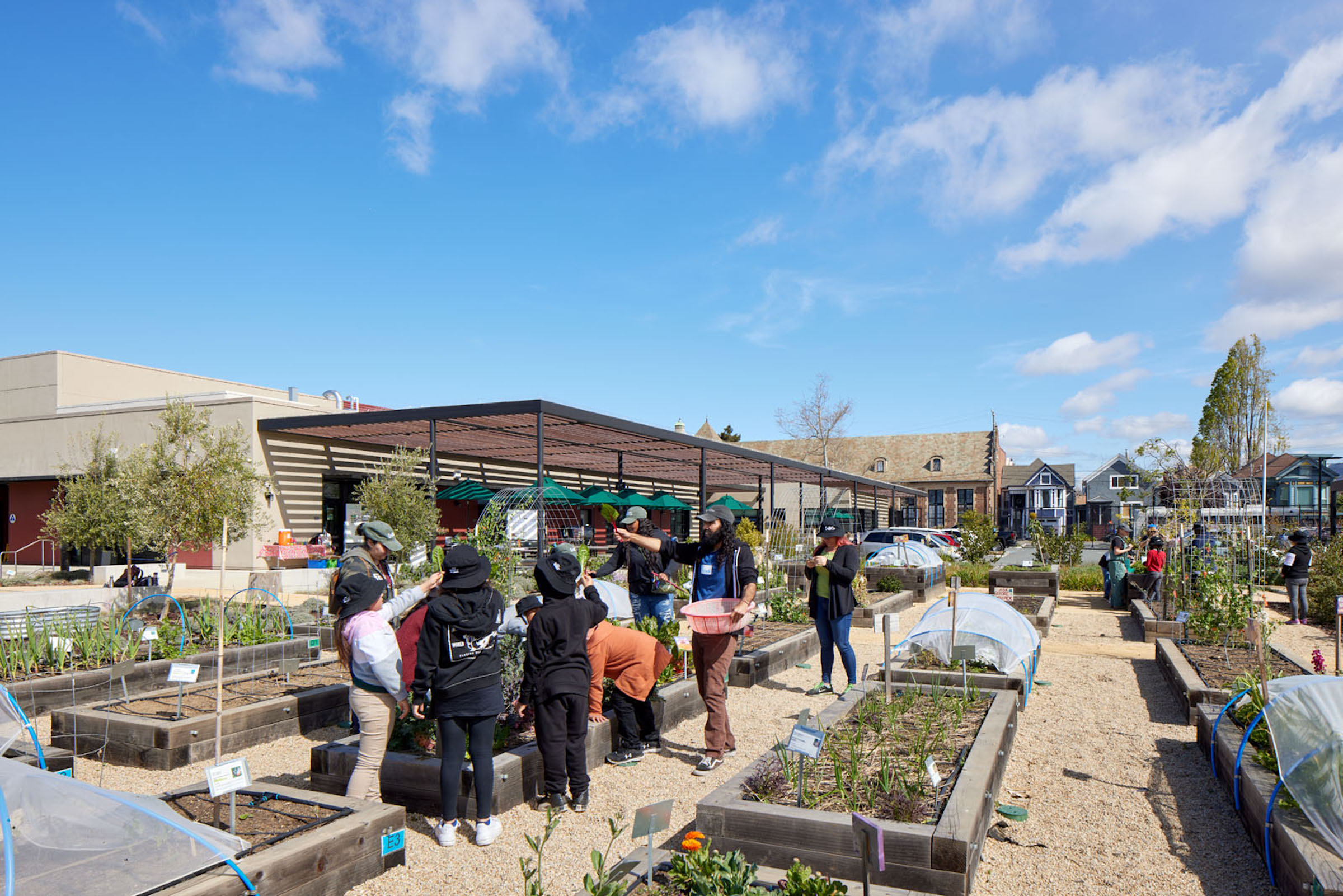CAW Architects recently completed a facility for the Oakland, Calif., school district that feeds students and teaches them how to grow, harvest, and cook produce grown onsite. The production kitchen at the Unified School District Central Kitchen, Instructional Farm, and Education Center (“The Center”) prepares and distributes about 30,000 meals a day for district schools lacking their own kitchens.
The site also provides training for school district cafeteria workers and educational programs for students to learn about culinary arts, science, health, wellness, and agriculture. A greenhouse and demonstration garden illustrate growing cycles and how to identify different types of produce. The greenhouse produces starter plants from seed to supply about 60 school gardens. Culinary instruction takes place in a classroom outfitted with a full-service demonstration and teaching kitchen, and in an outdoor kitchen equipped with a pizza oven.
A courtyard serves as the facility’s central hub, connecting the production kitchen, indoor classrooms, and outdoor classrooms. Large glass roll-up doors open the indoors to the courtyard. An expansive wood trellis shades the courtyard and reduces glare in classrooms.
The building’s energy efficiency gets a boost from a hot water system that uses captured waste heat from a highly efficient C02 closed-loop refrigeration system. A solar-ready roof has space to support solar panels that will supply half of the production kitchen’s electric power.
The next phase of the project will use an undeveloped portion of the site to create an urban farm, community garden, and nature play space. The farm will offer career training for high school students and adult education programs.
Owner and/or developer: Oakland (Calif.) Unified School District
Design architect: CAW Architects
Architect of record: CAW Architects
MEP engineer: Integral Group
Structural engineer: SOHA Engineers
Construction manager: Cumming Group
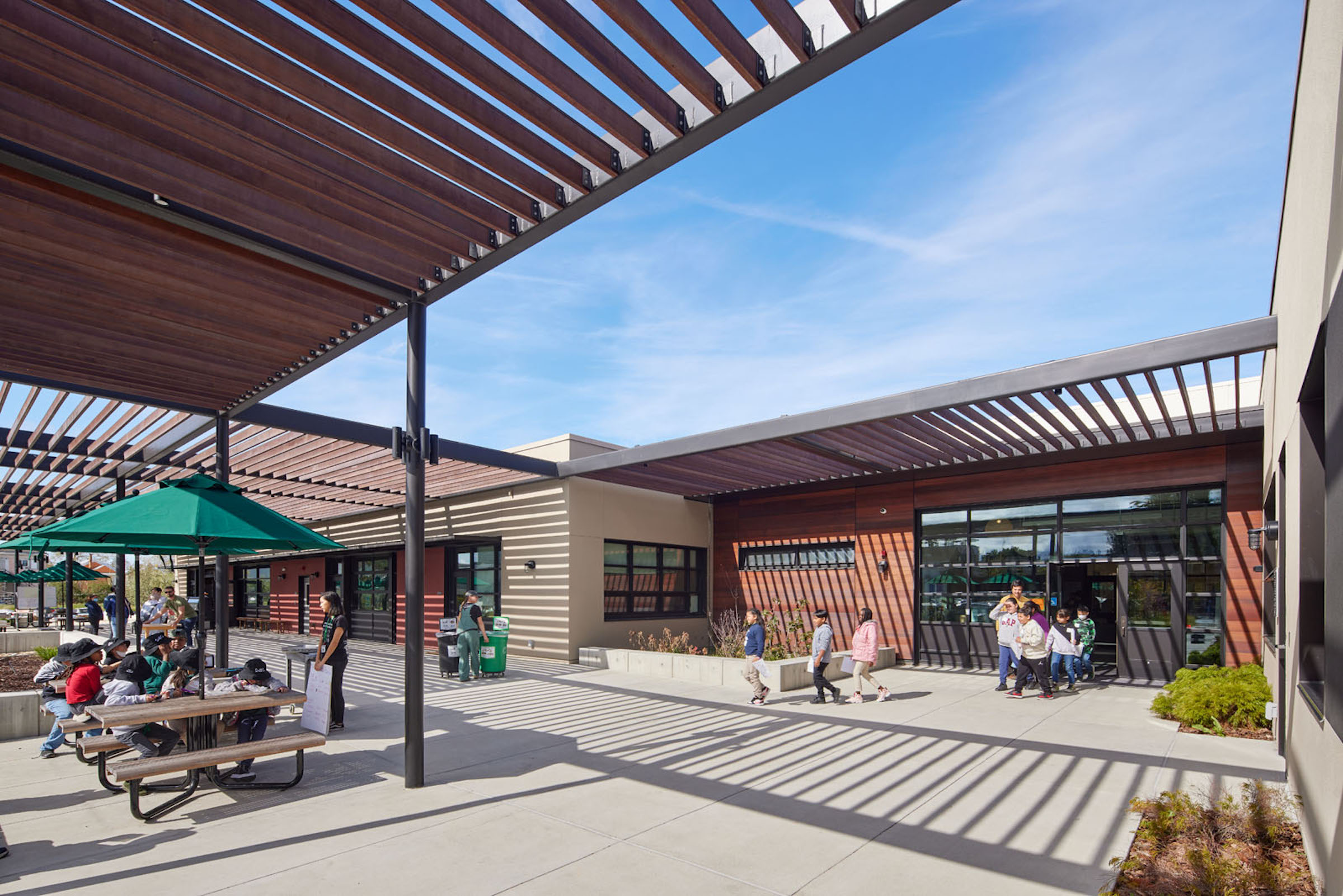
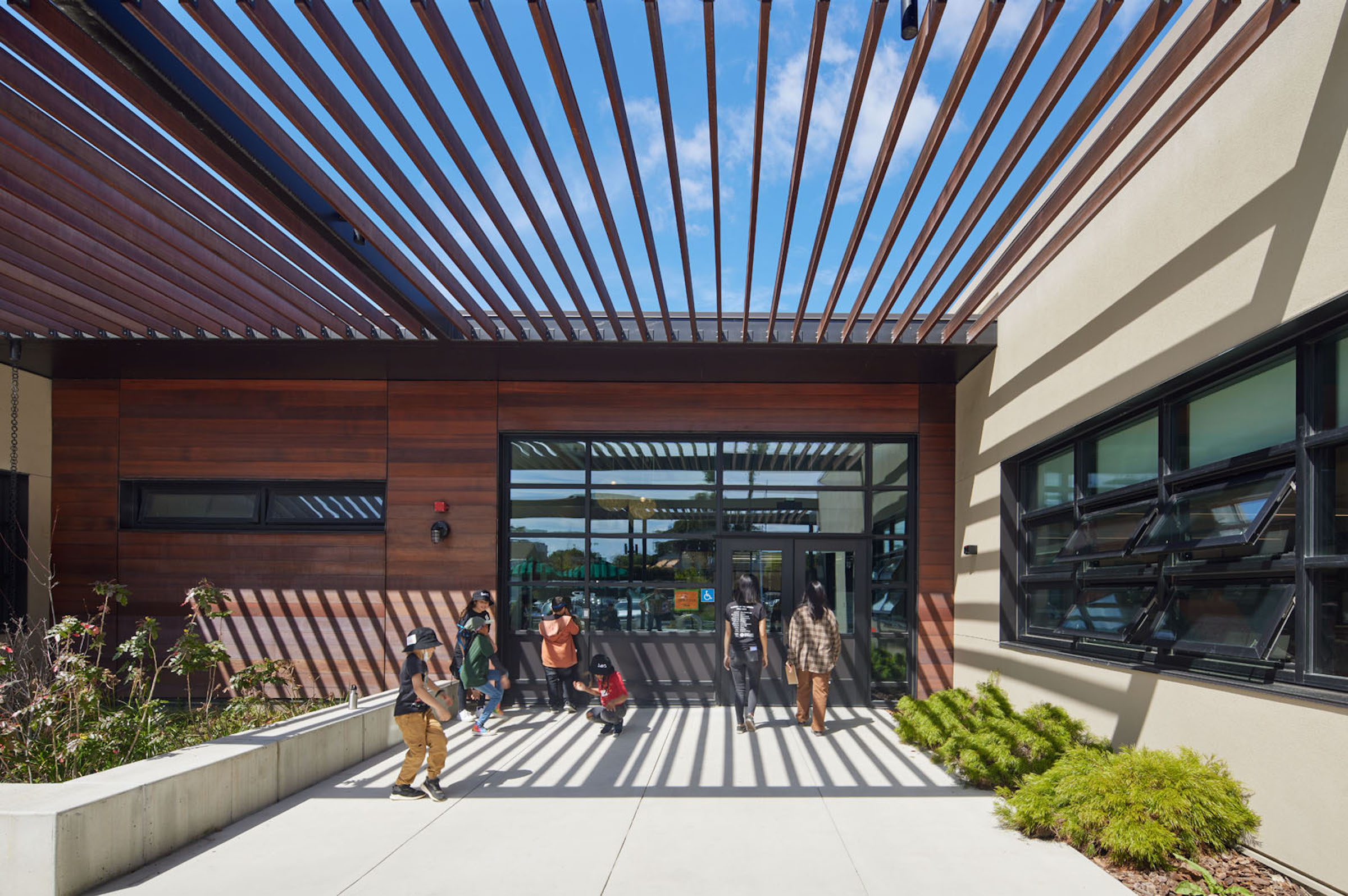
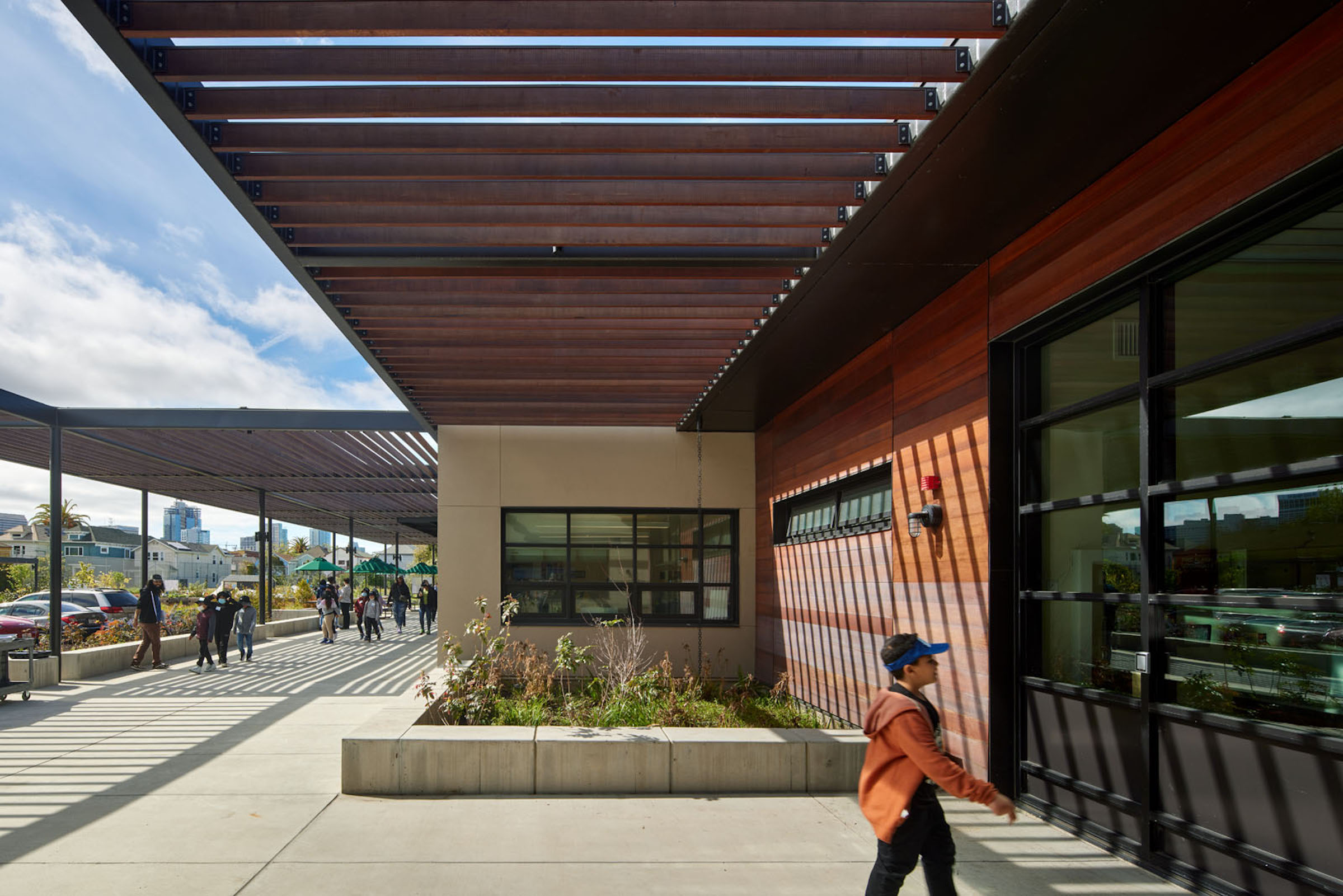
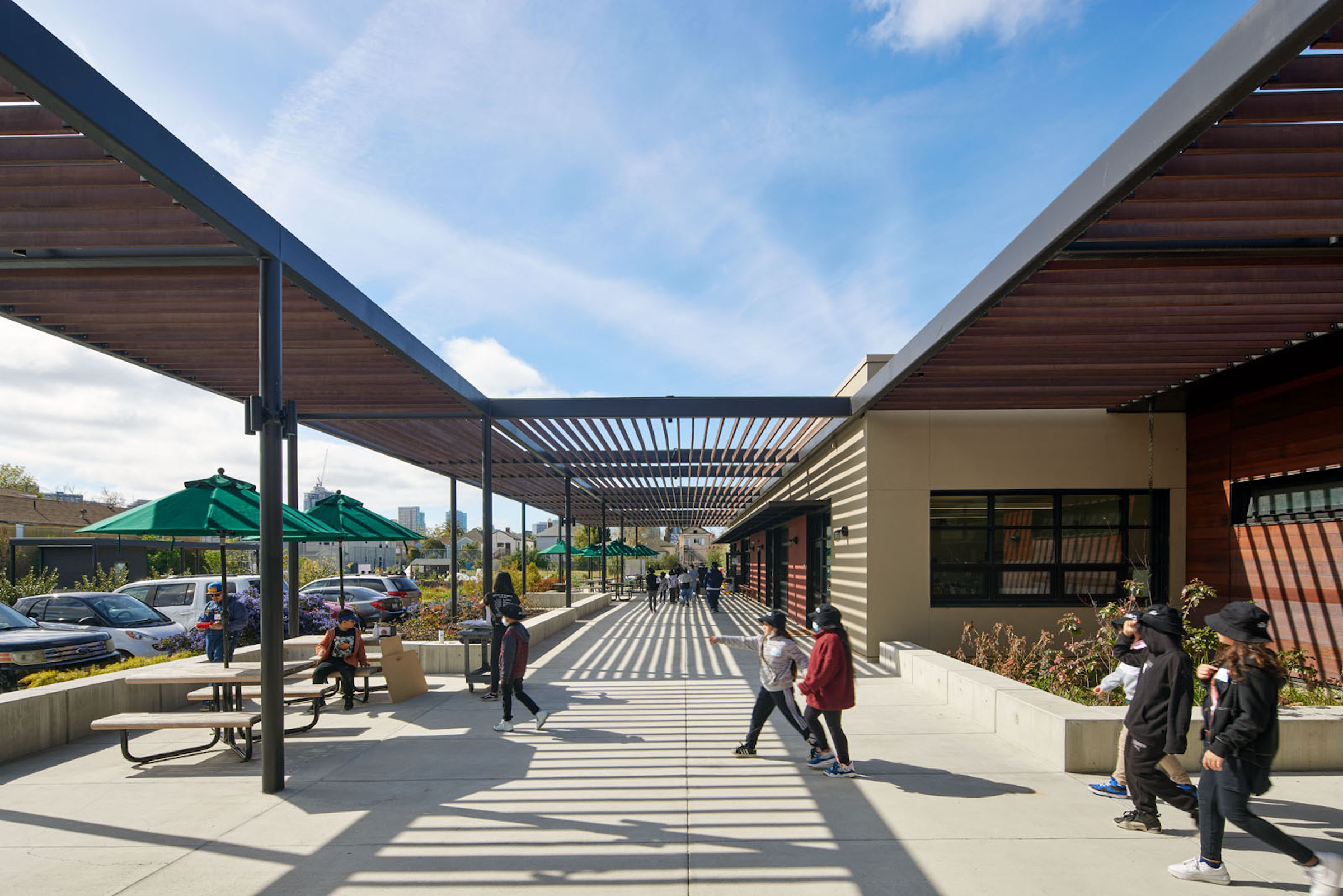
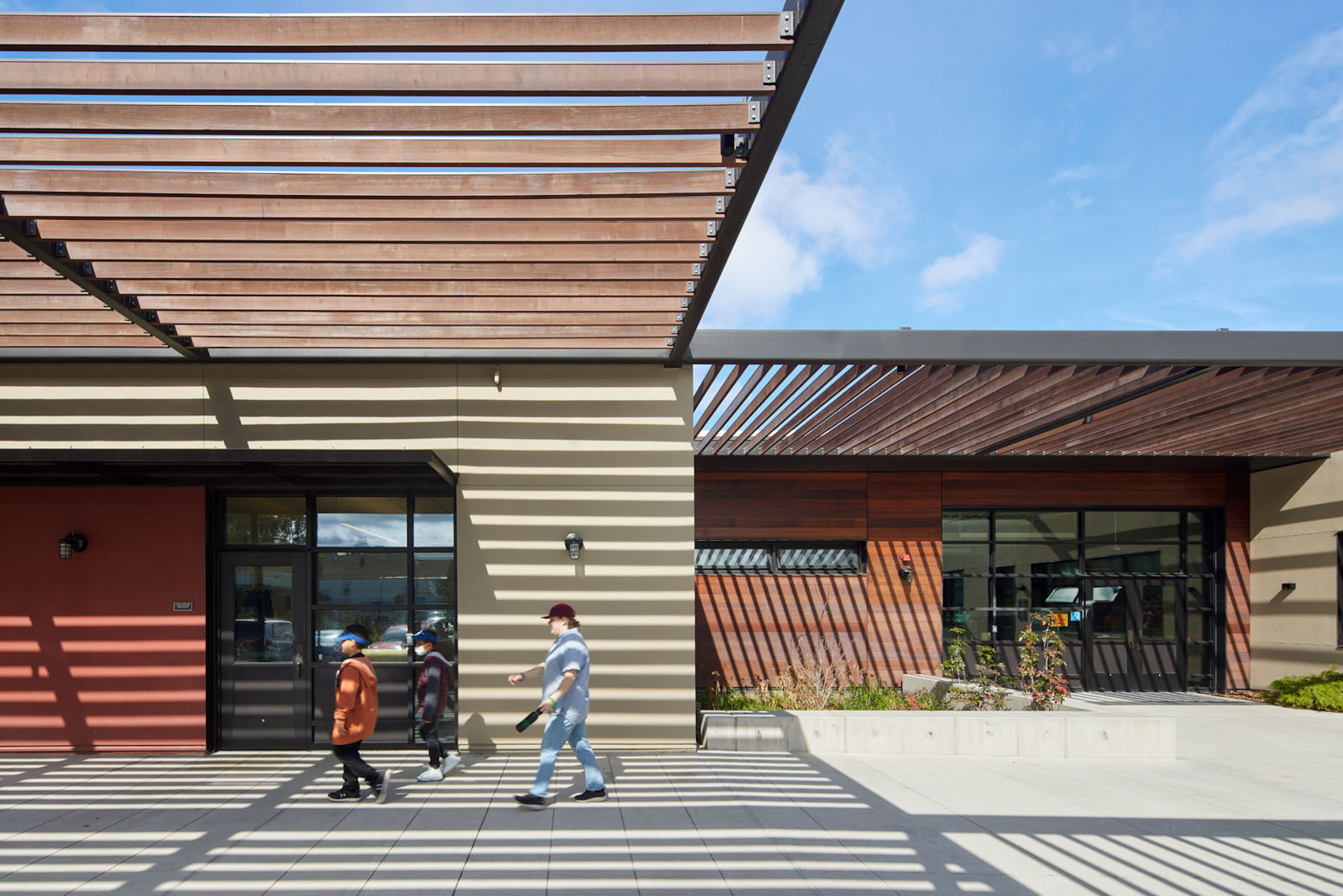
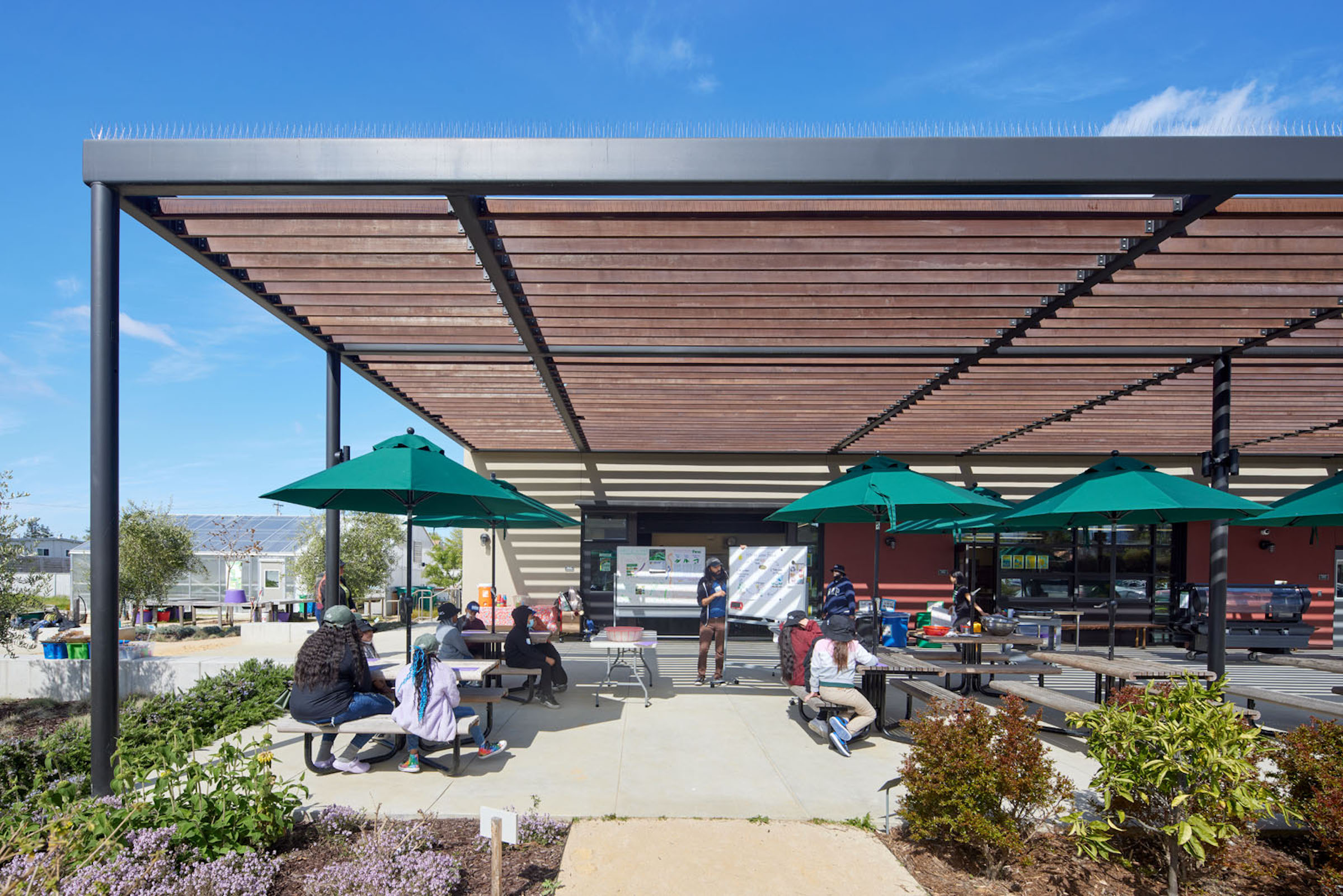
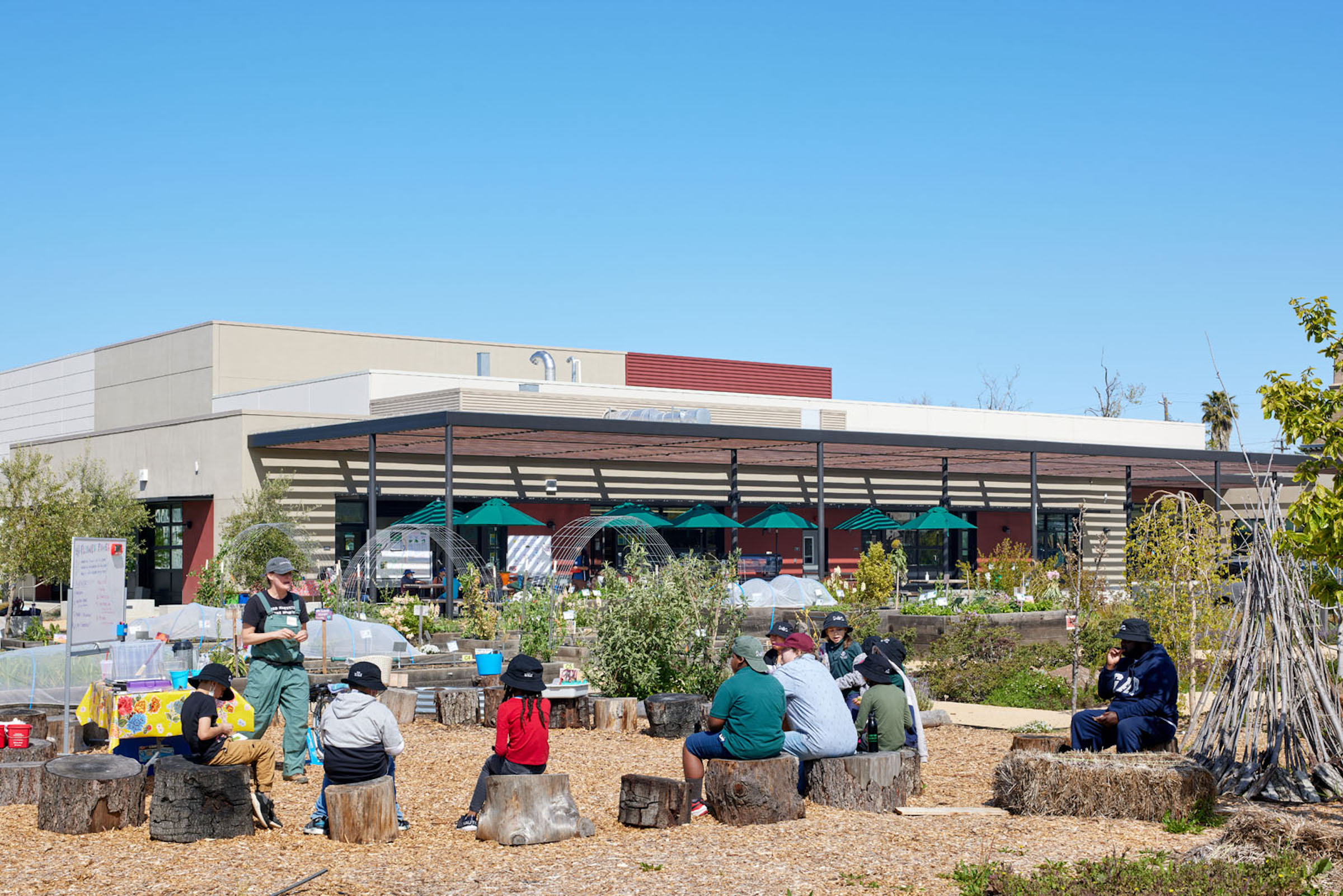
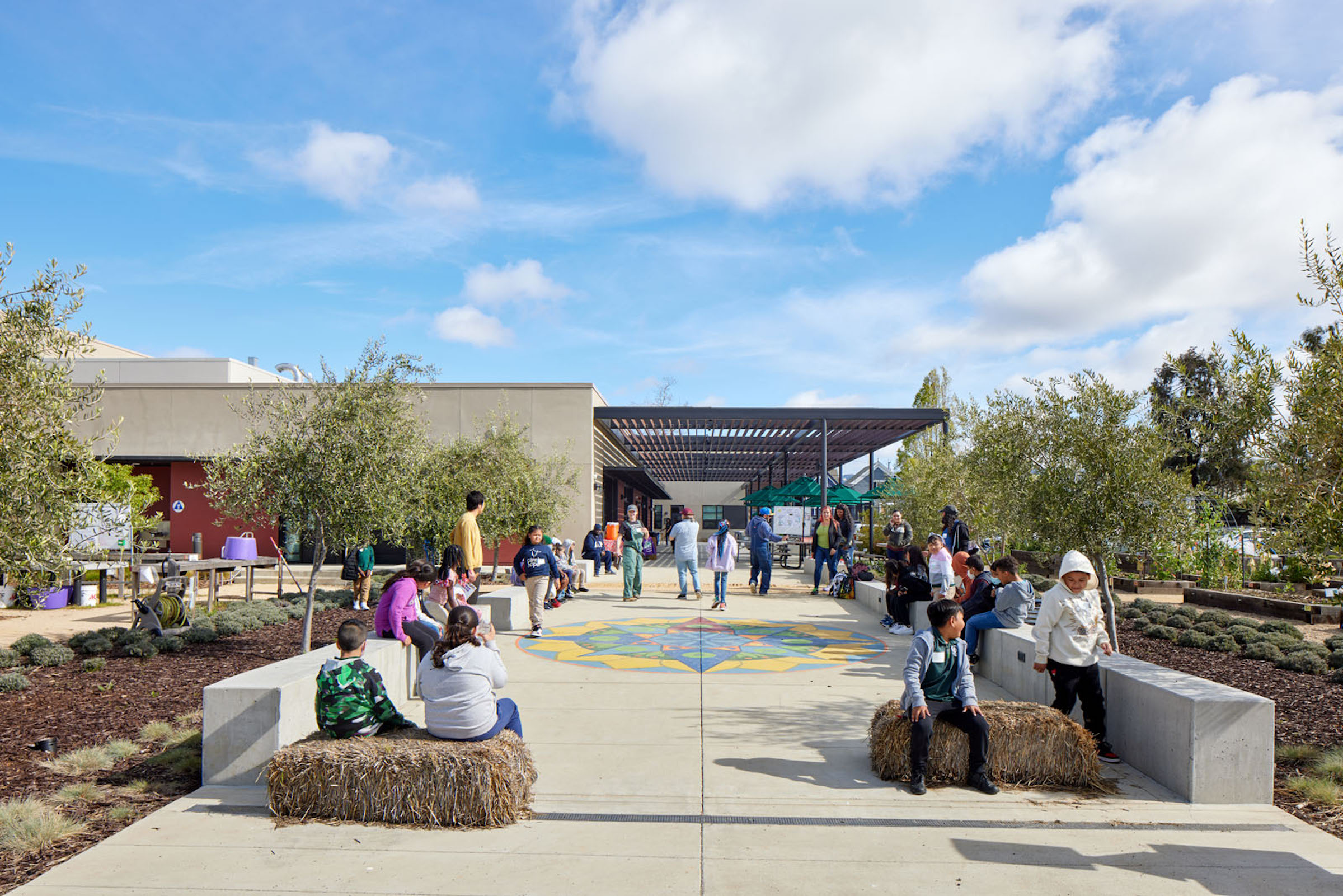
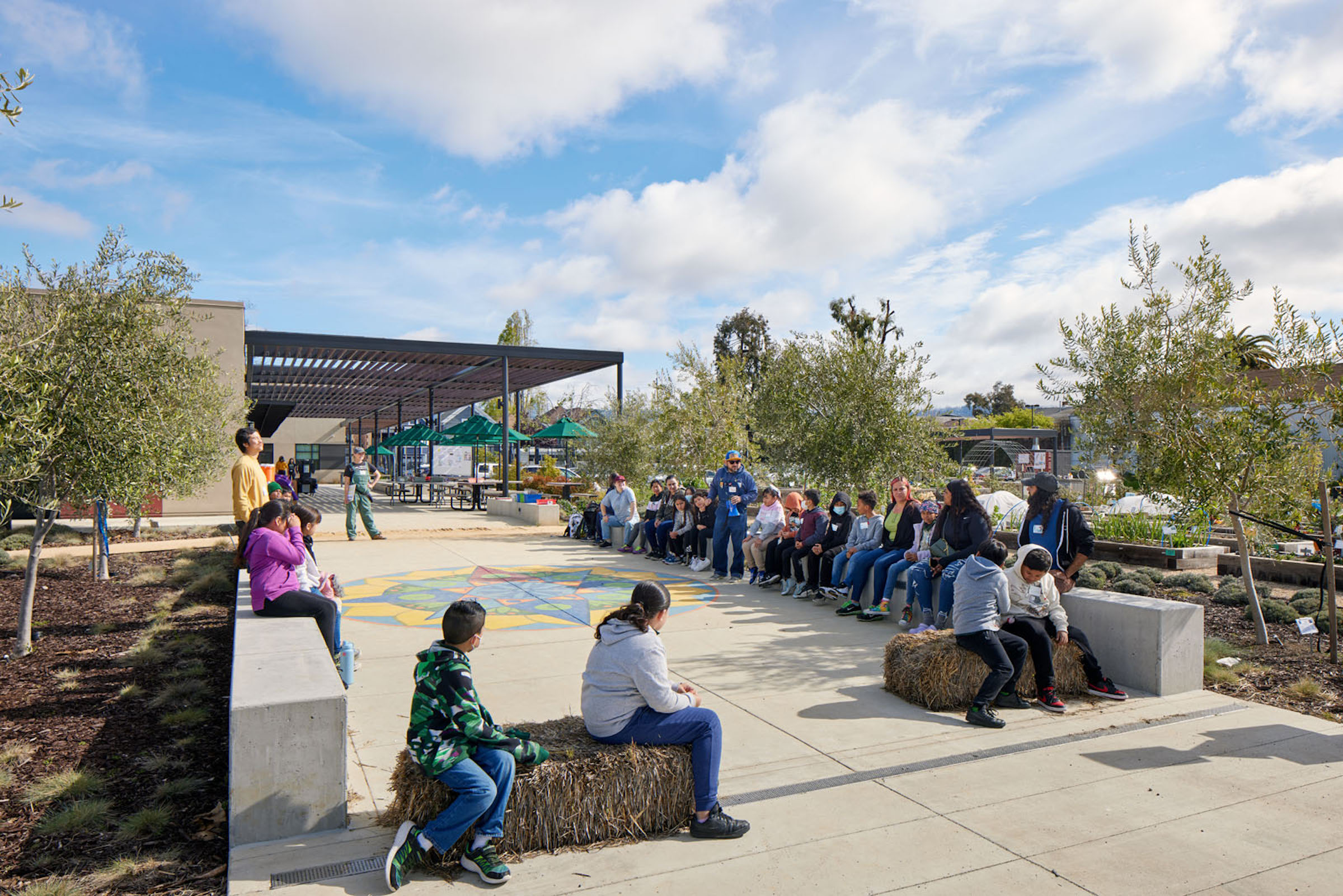

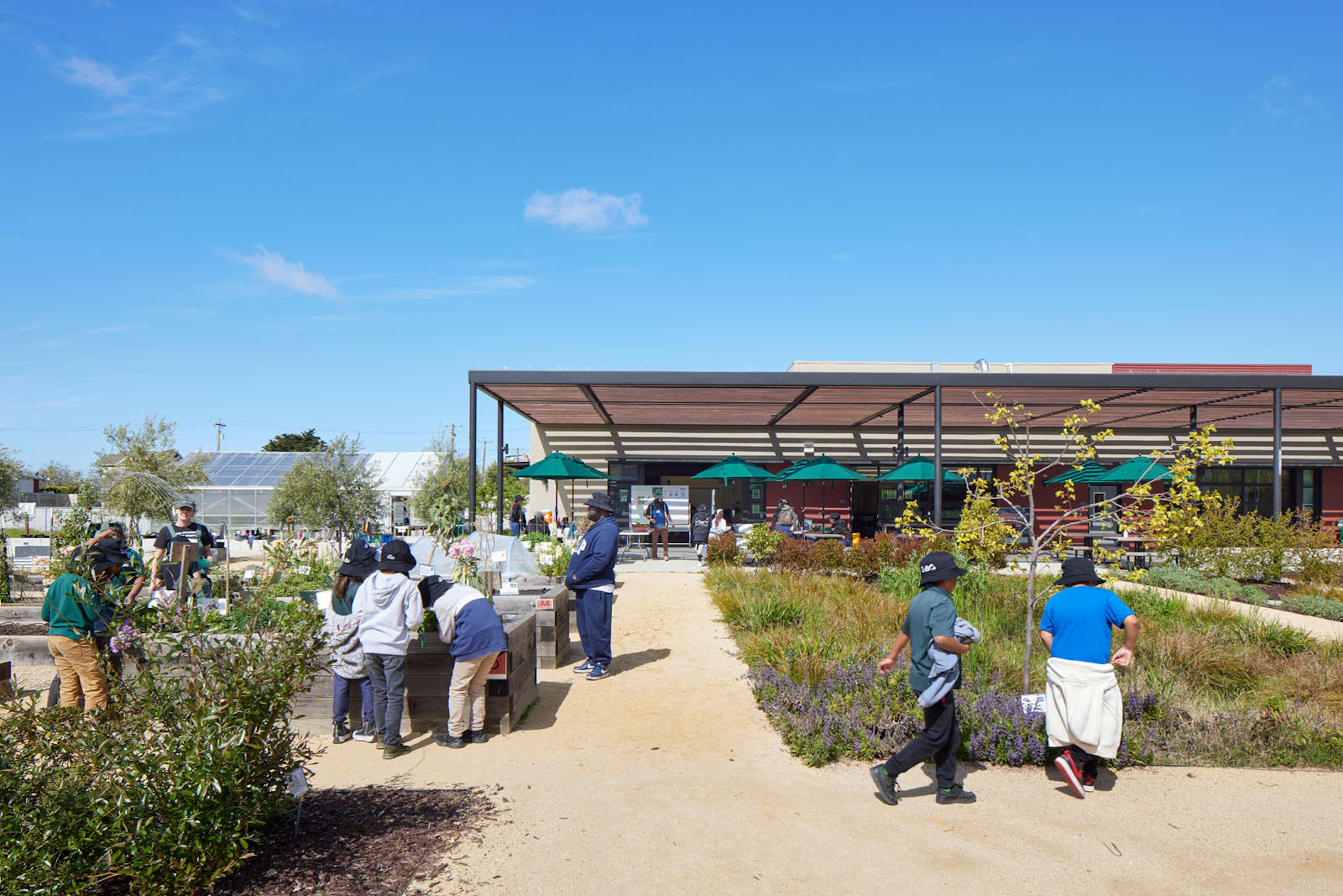
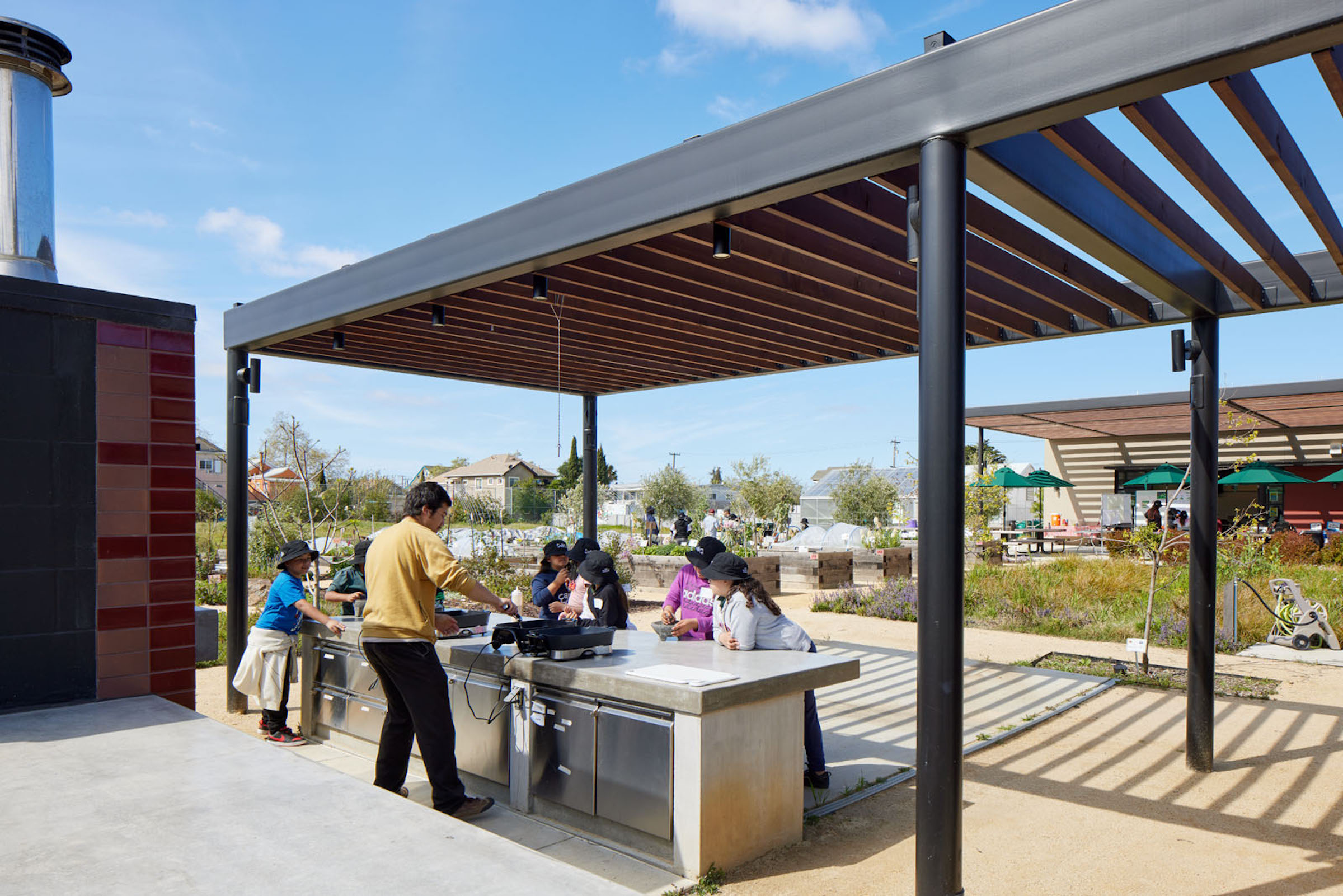
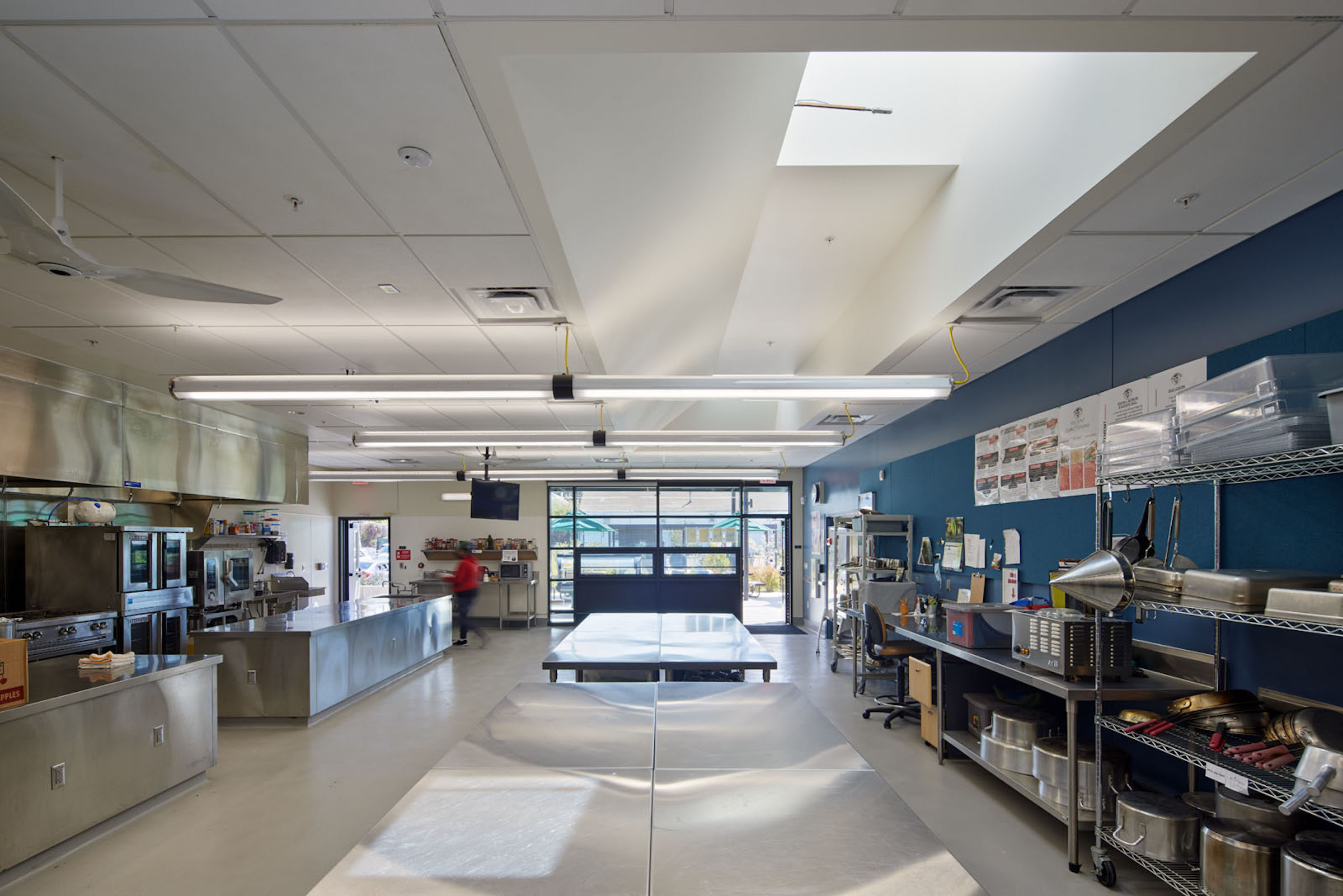
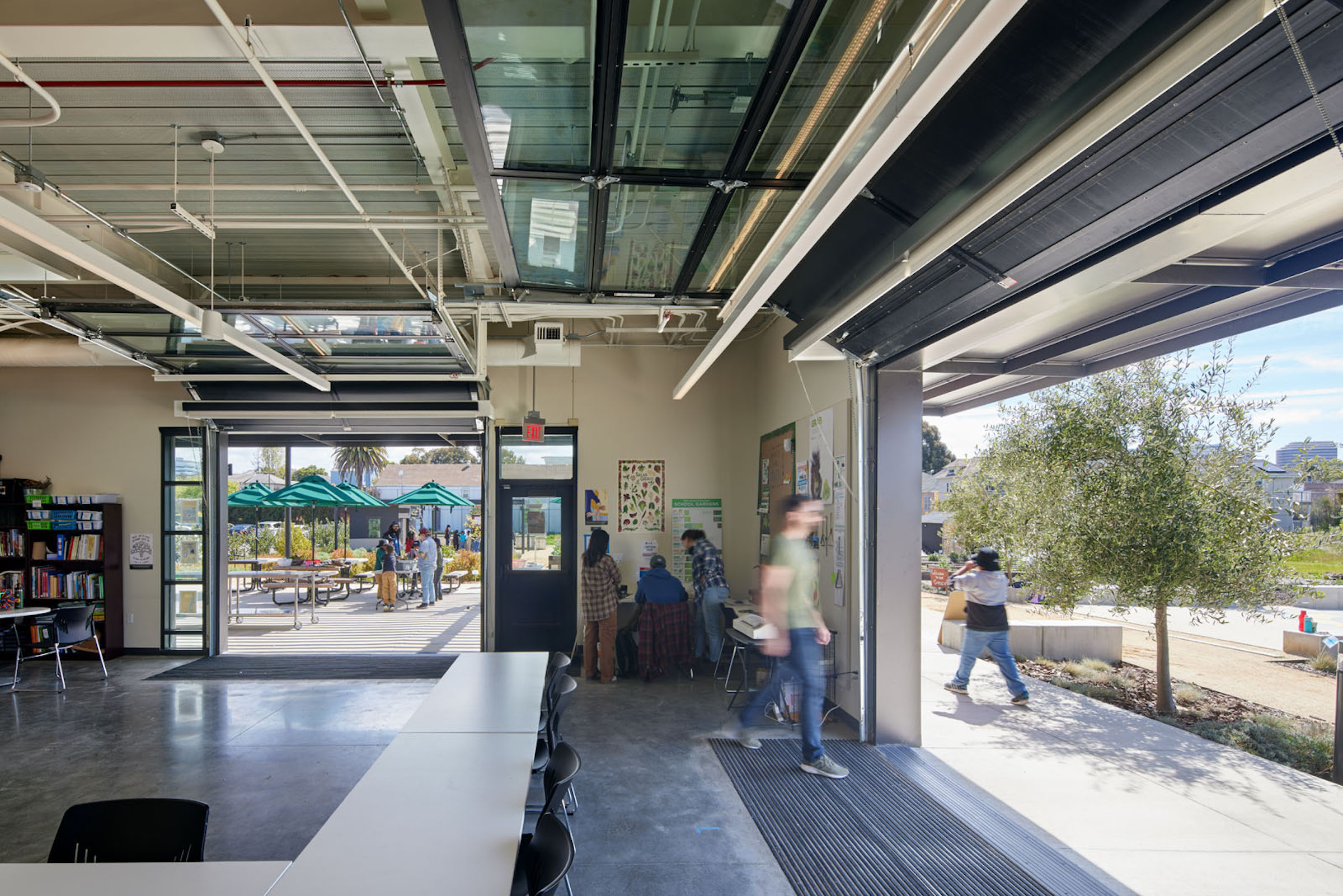

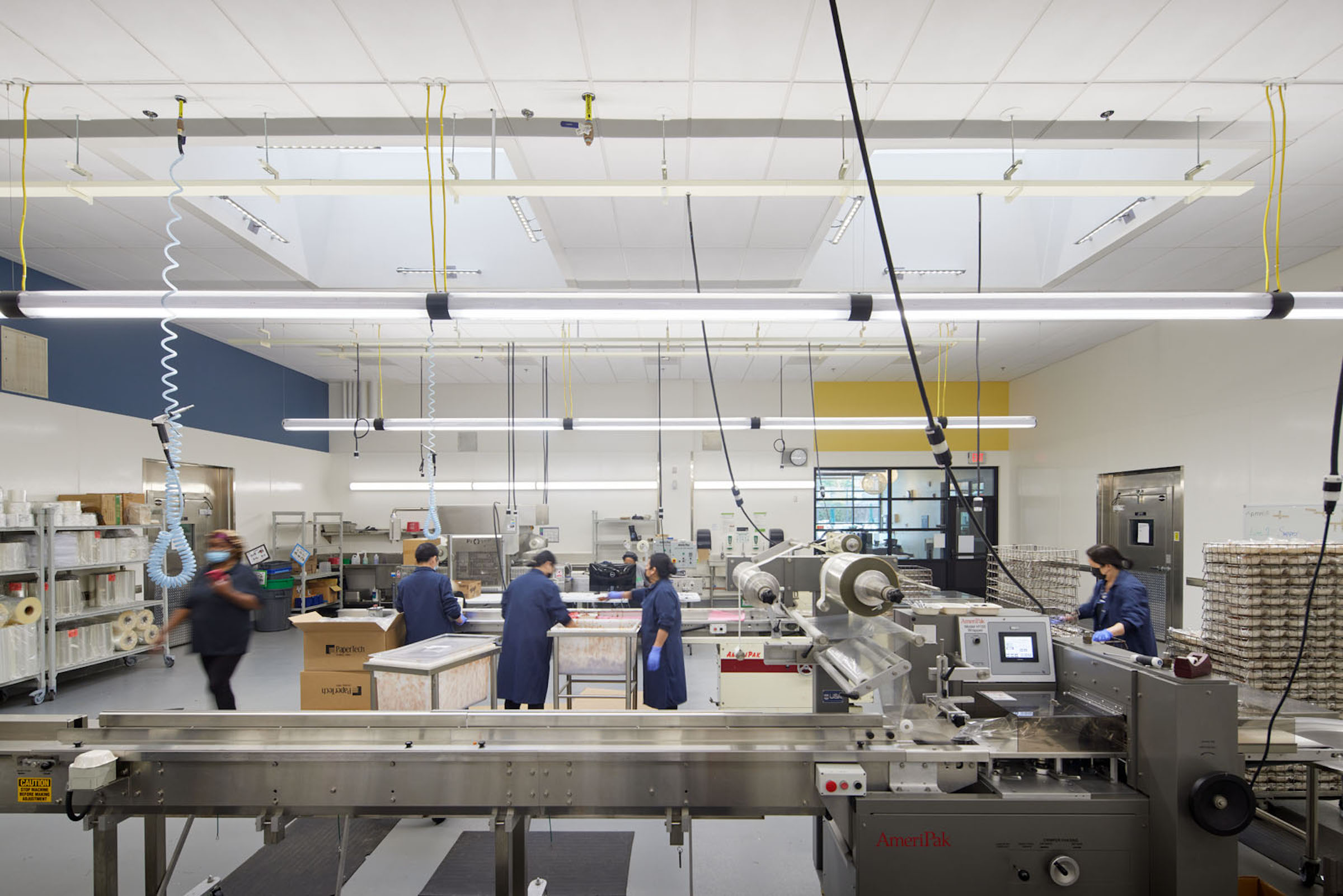

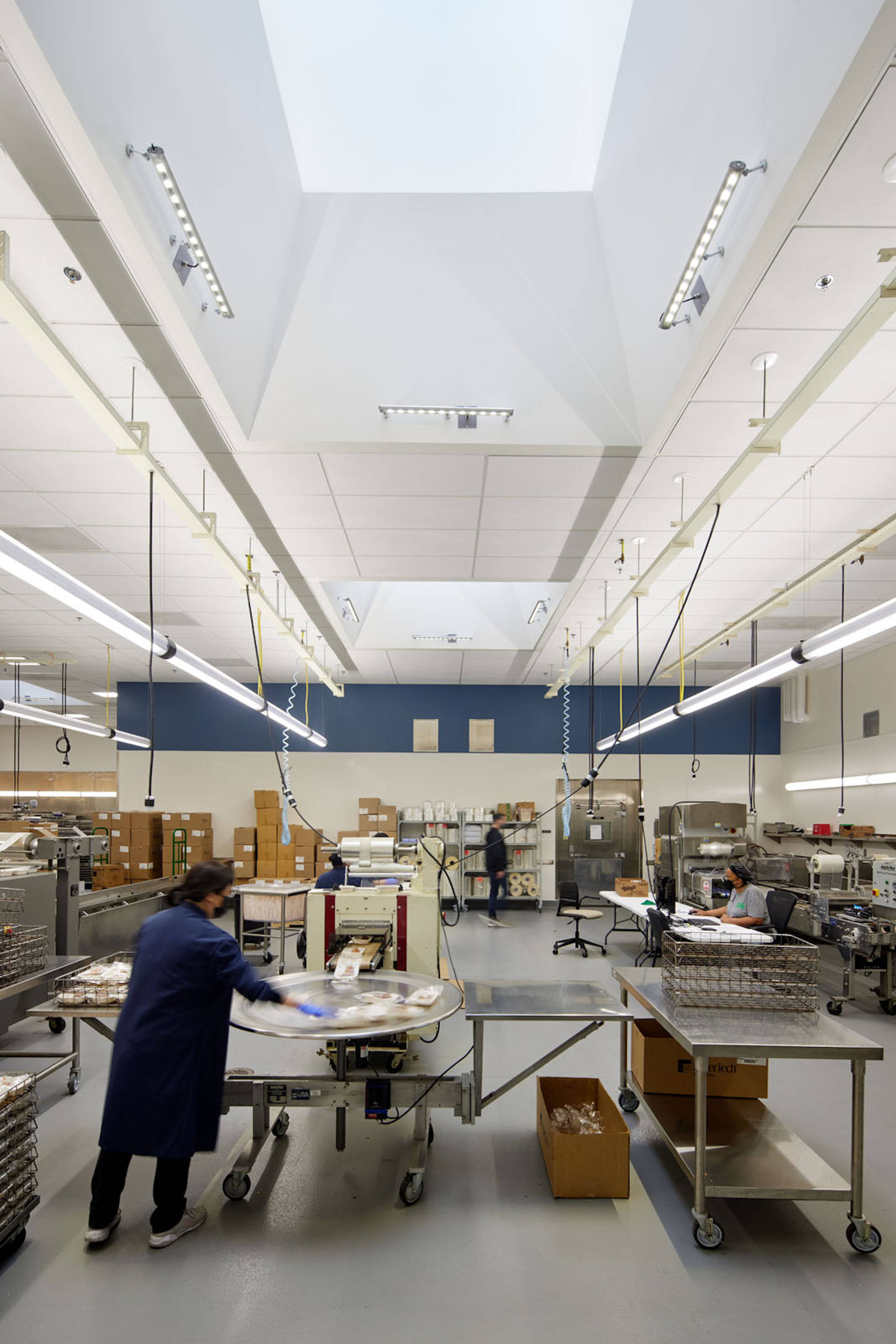

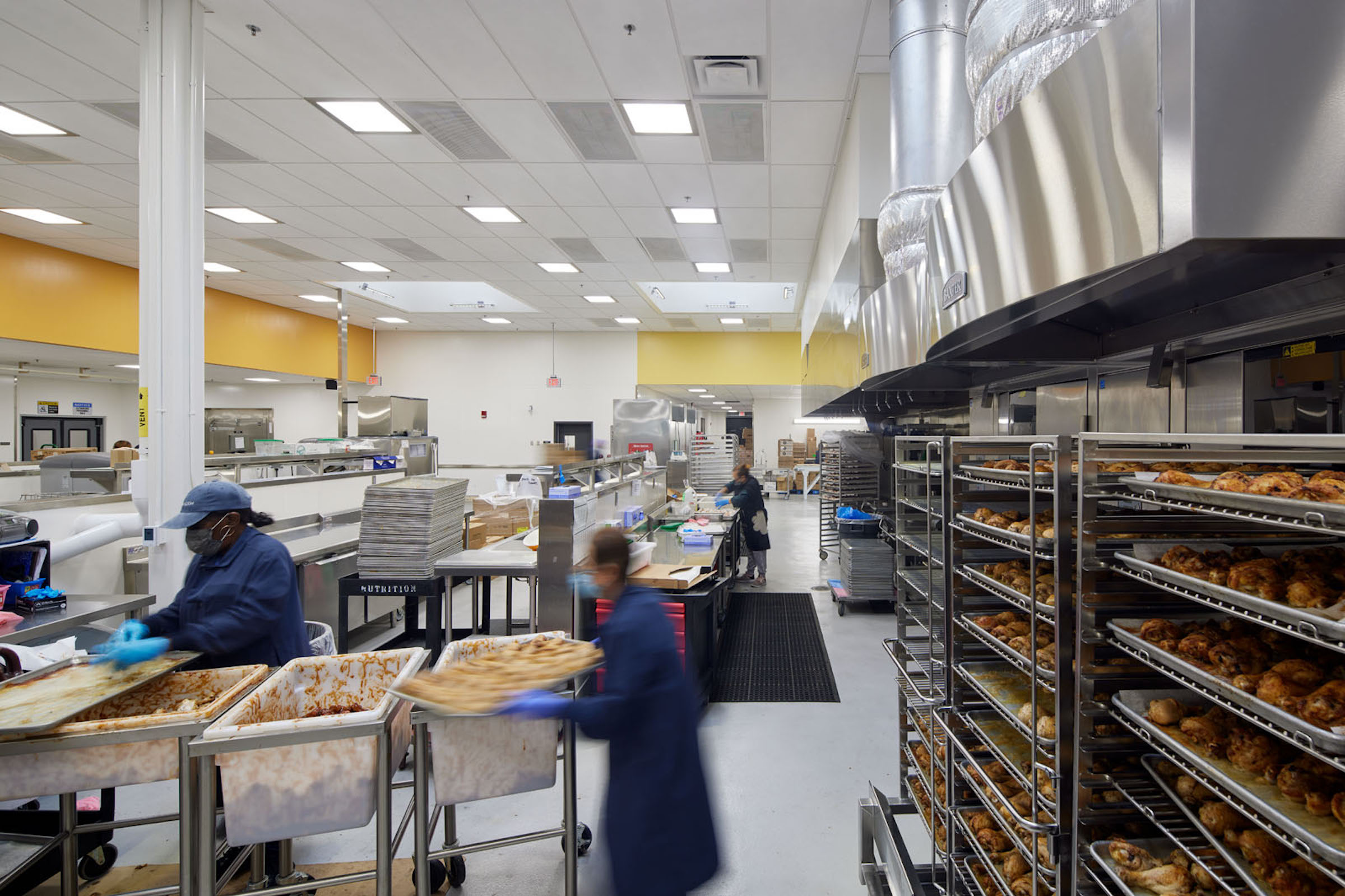
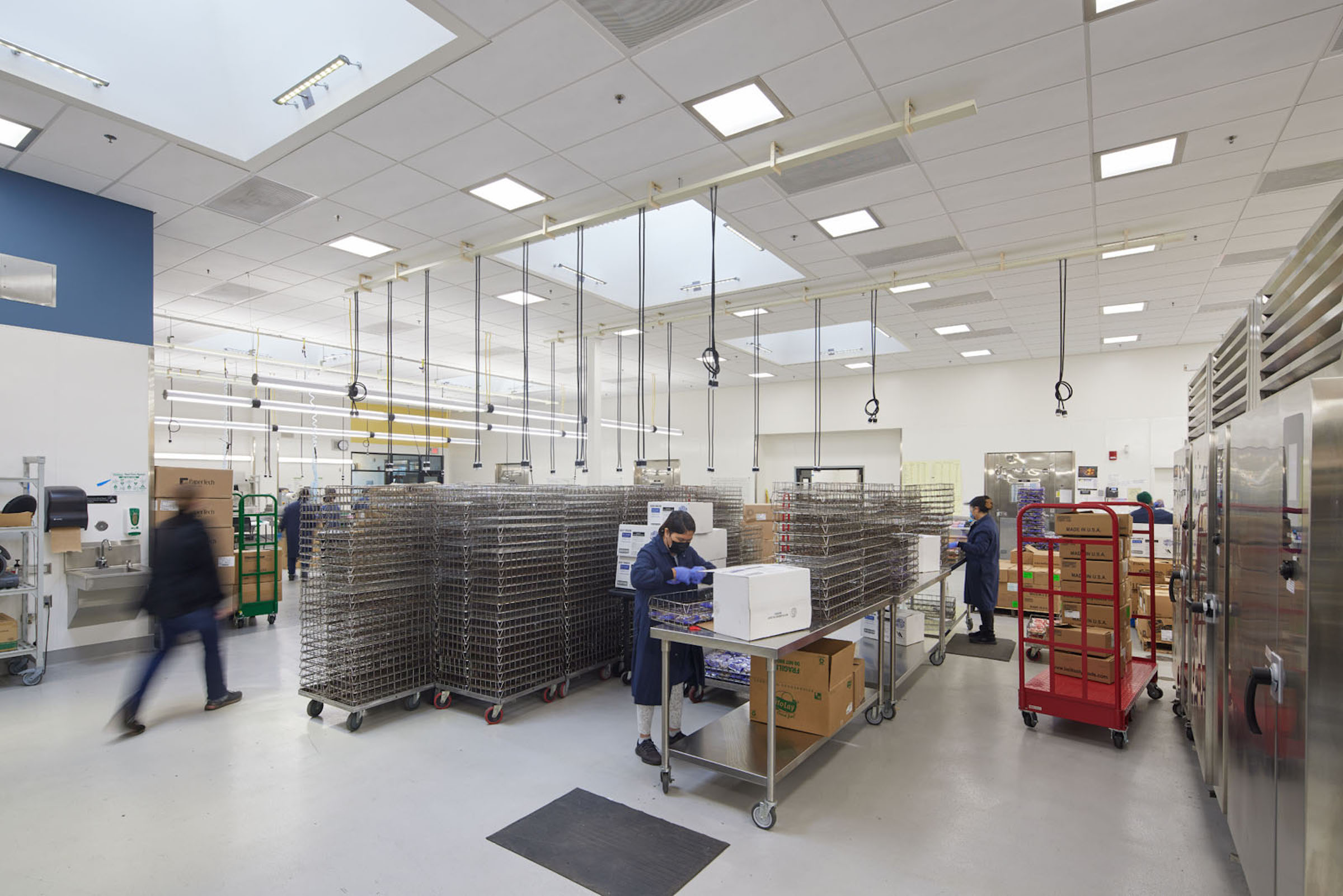

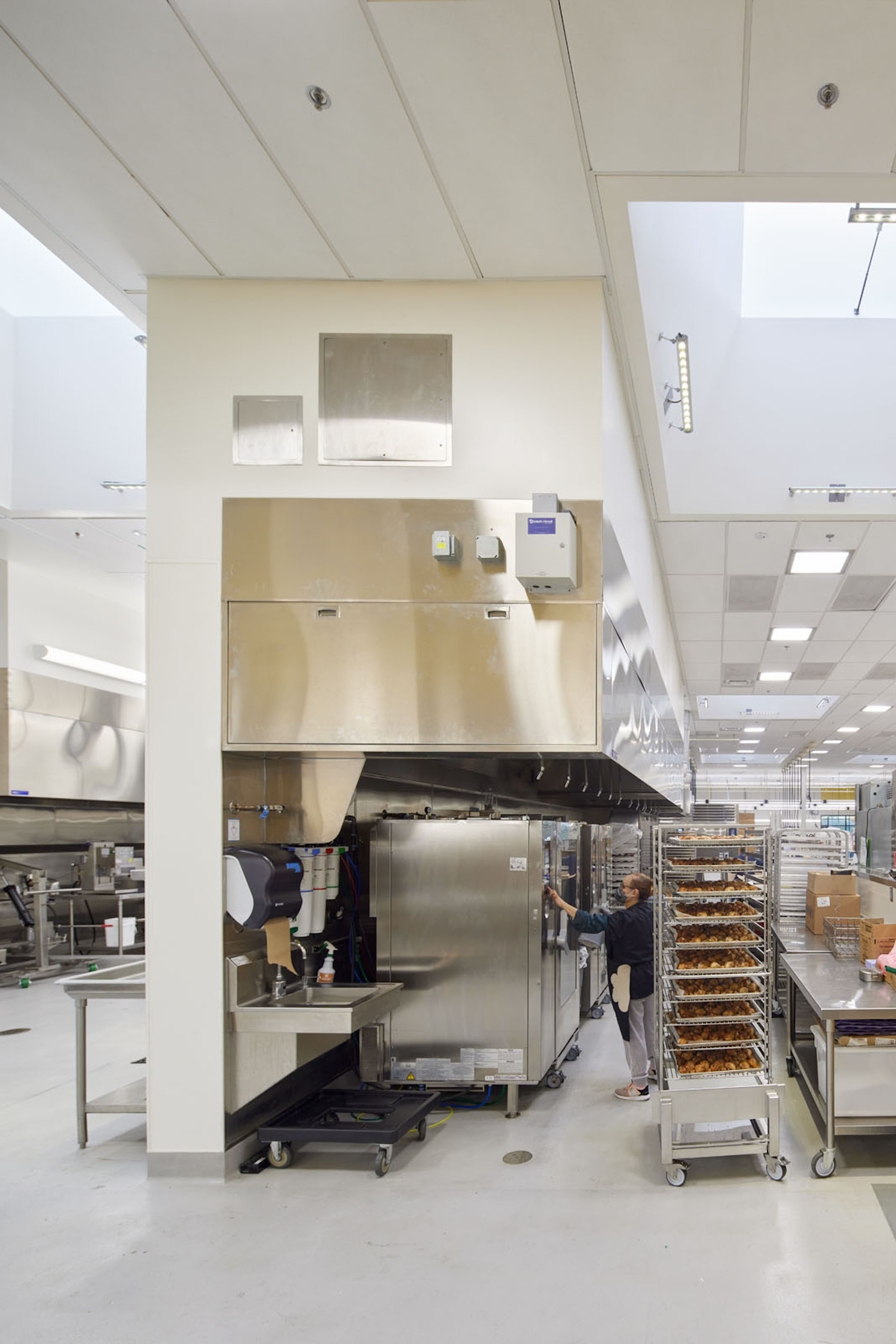
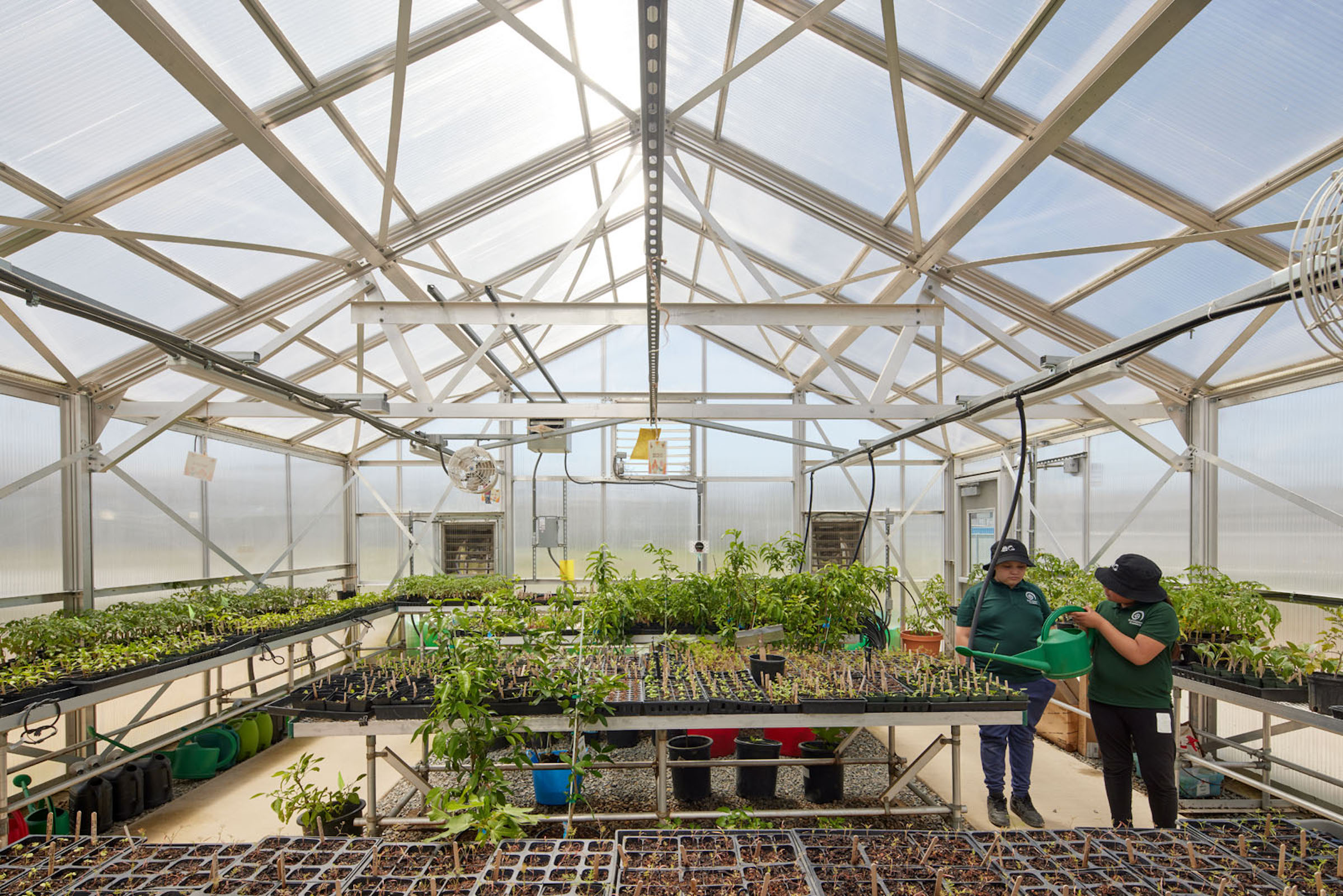
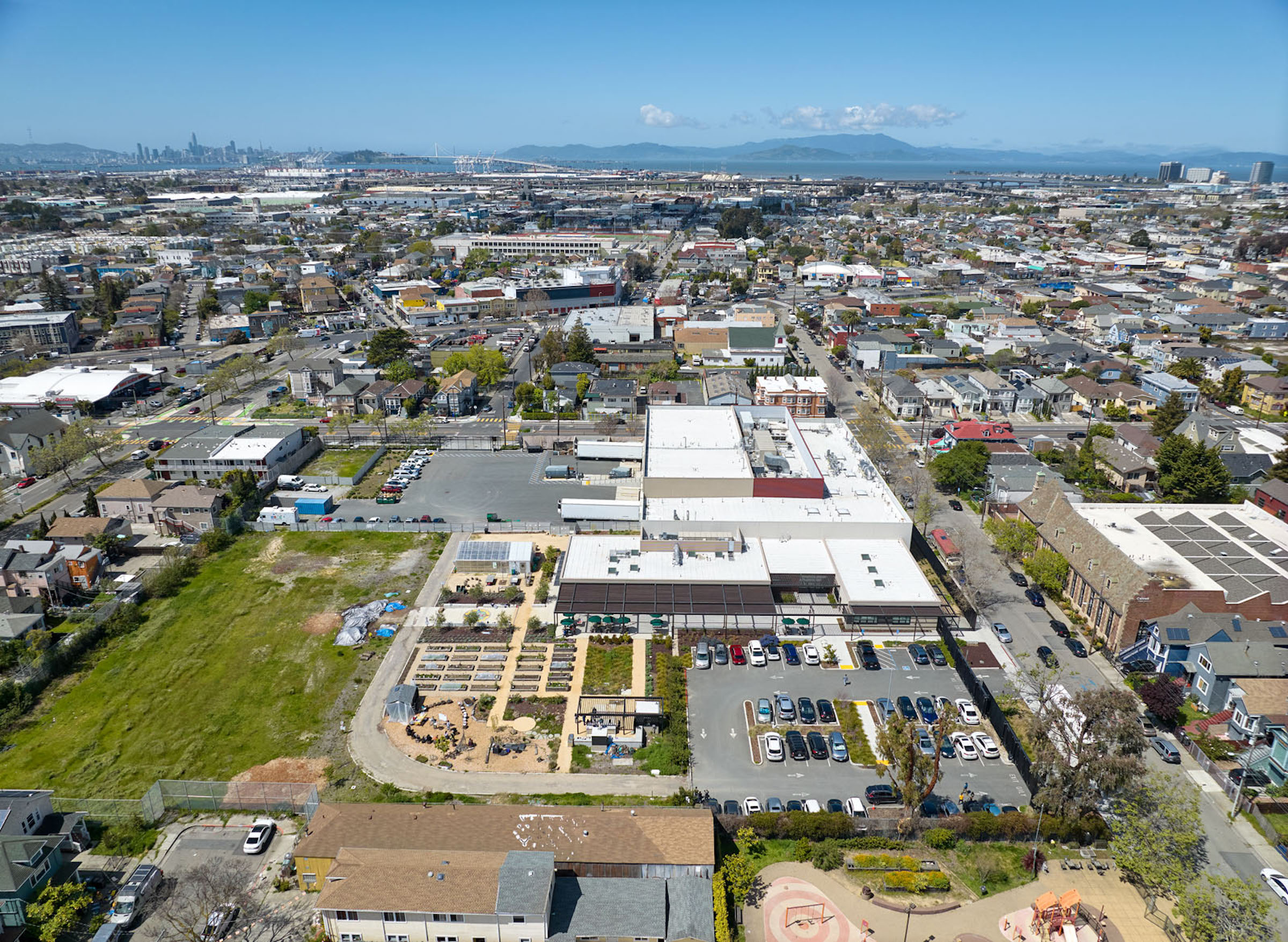
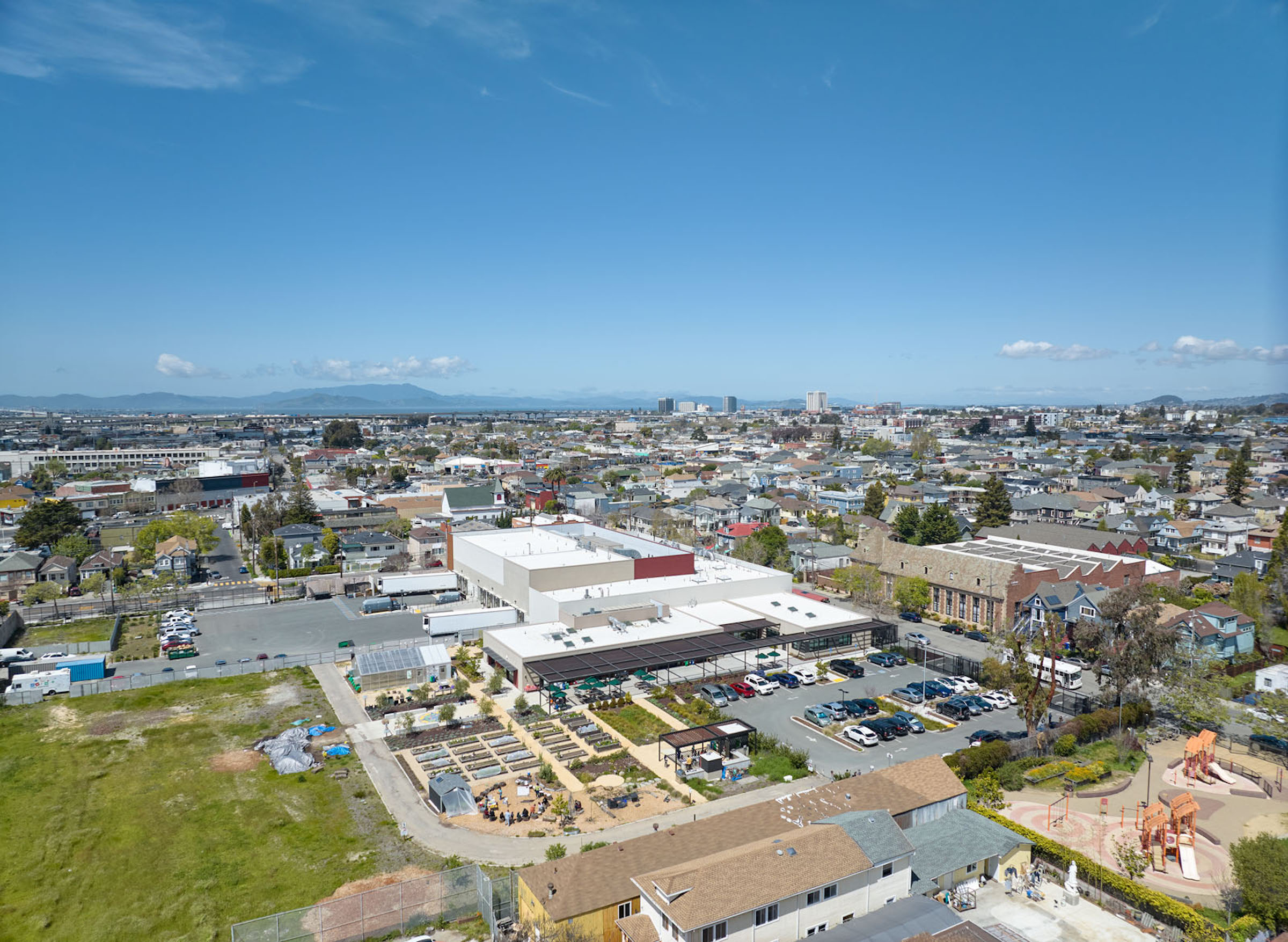

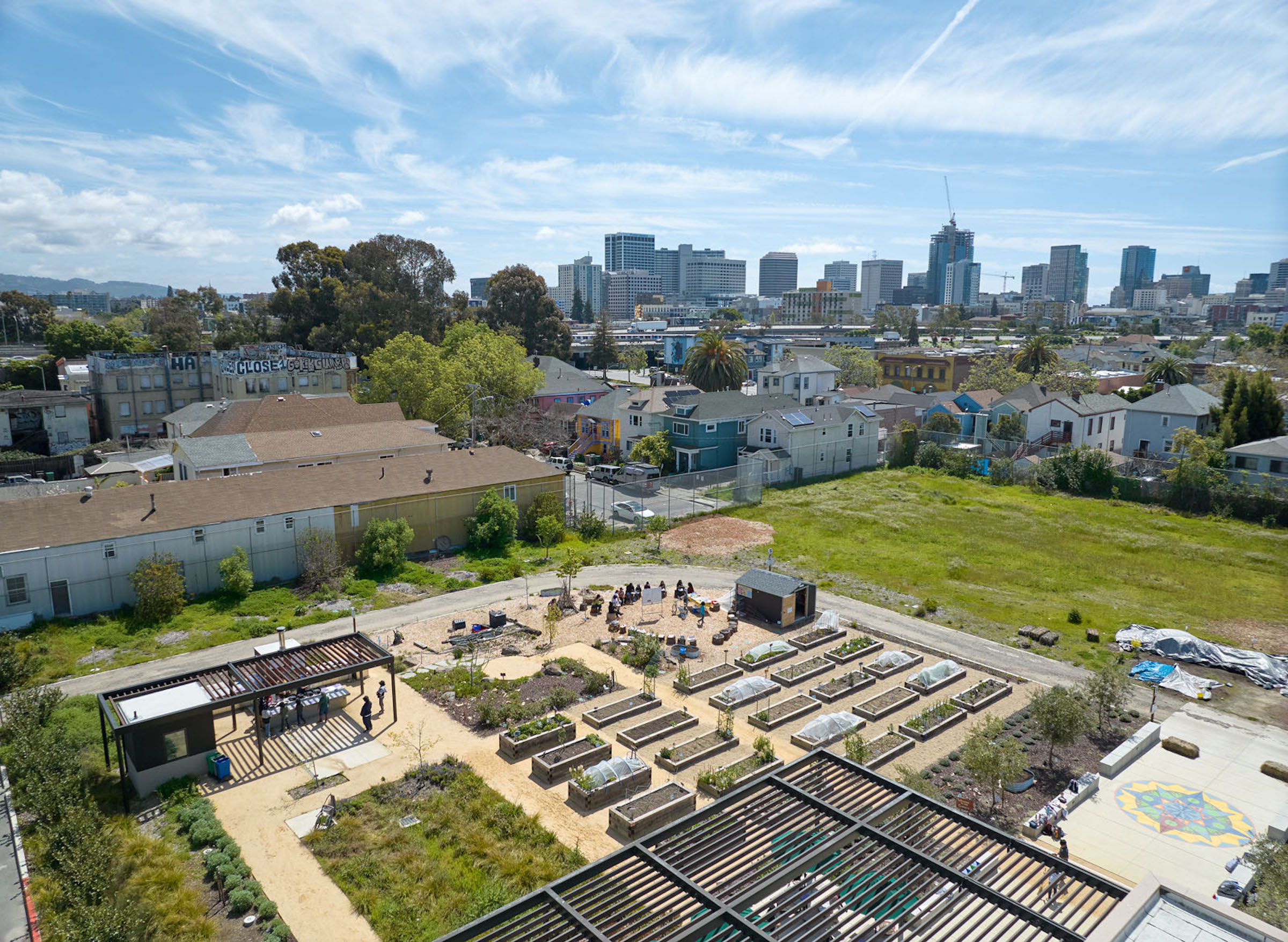

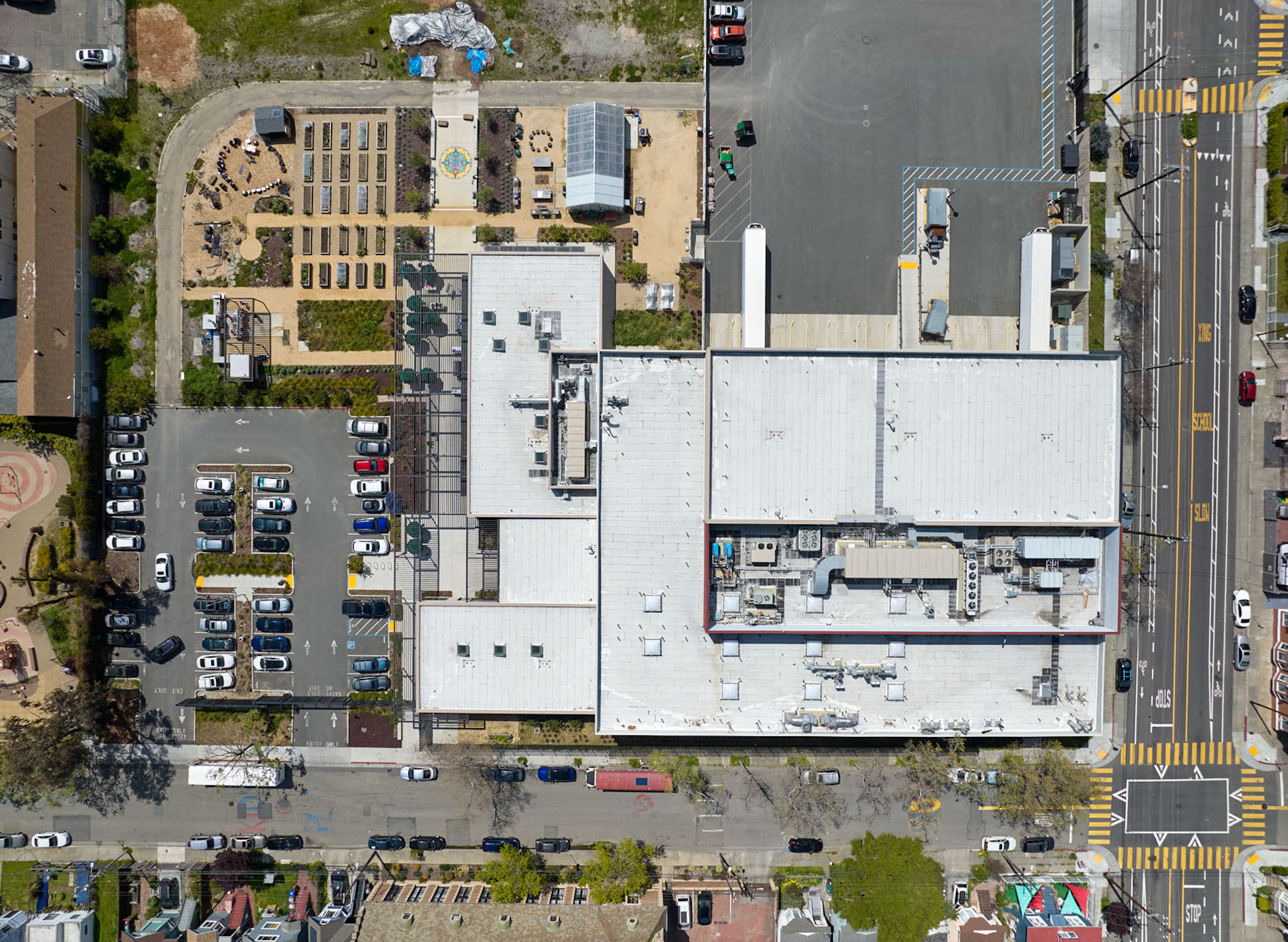
Related Stories
| May 18, 2011
Raphael Viñoly’s serpentine-shaped building snakes up San Francisco hillside
The hillside location for the Ray and Dagmar Dolby Regeneration Medicine building at the University of California, San Francisco, presented a challenge to the Building Team of Raphael Viñoly, SmithGroup, DPR Construction, and Forell/Elsesser Engineers. The 660-foot-long serpentine-shaped building sits on a structural framework 40 to 70 feet off the ground to accommodate the hillside’s steep 60-degree slope.
| May 18, 2011
One of Delaware’s largest high schools seeks LEED for Schools designation
The $82 million, 280,000-sf Dover (Del.) High School will have capacity for 1,800 students and feature a 900-seat theater, a 2,500-seat gymnasium, and a 5,000-seat football stadium.
| May 17, 2011
Sustainability tops the syllabus at net-zero energy school in Texas
Texas-based firm Corgan designed the 152,200-sf Lady Bird Johnson Middle School in Irving, Texas, with the goal of creating the largest net-zero educational facility in the nation, and the first in the state. The facility is expected to use 50% less energy than a standard school.
| May 16, 2011
USGBC and AIA unveil report for greening K-12 schools
The U.S. Green Building Council and the American Institute of Architects unveiled "Local Leaders in Sustainability: A Special Report from Sundance," which outlines a five-point national action plan that mayors and local leaders can use as a framework to develop and implement green schools initiatives.
| May 10, 2011
Greenest buildings: K-12 and commercial markets
Can you name the nation’s greenest K-12 school? How about the greenest commercial building? If you drew a blank, don’t worry because our friends at EarthTechling have all the information on those two projects. Check out the Hawai’i Preparatory Academy’s Energy Lab on the Big Island and Cascadia Green Building Council’s new Seattle headquarters.
| Apr 12, 2011
College of New Jersey facility will teach teachers how to teach
The College of New Jersey broke ground on its 79,000-sf School of Education building in Ewing, N.J.
| Mar 15, 2011
What Starbucks taught us about redesigning college campuses
Equating education with a cup of coffee might seem like a stretch, but your choice of college, much like your choice of coffee, says something about the ability of a brand to transform your day. When Perkins + Will was offered the chance to help re-think the learning spaces of Miami Dade College, we started by thinking about how our choice of morning coffee has changed over the years, and how we could apply those lessons to education.
| Mar 15, 2011
Passive Strategies for Building Healthy Schools, An AIA/CES Discovery Course
With the downturn in the economy and the crash in residential property values, school districts across the country that depend primarily on property tax revenue are struggling to make ends meet, while fulfilling the demand for classrooms and other facilities.
| Mar 11, 2011
Oregon childhood center designed at child-friendly scale
Design of the Early Childhood Center at Mt. Hood Community College in Gresham, Ore., focused on a achieving a child-friendly scale and providing outdoor learning environments.


